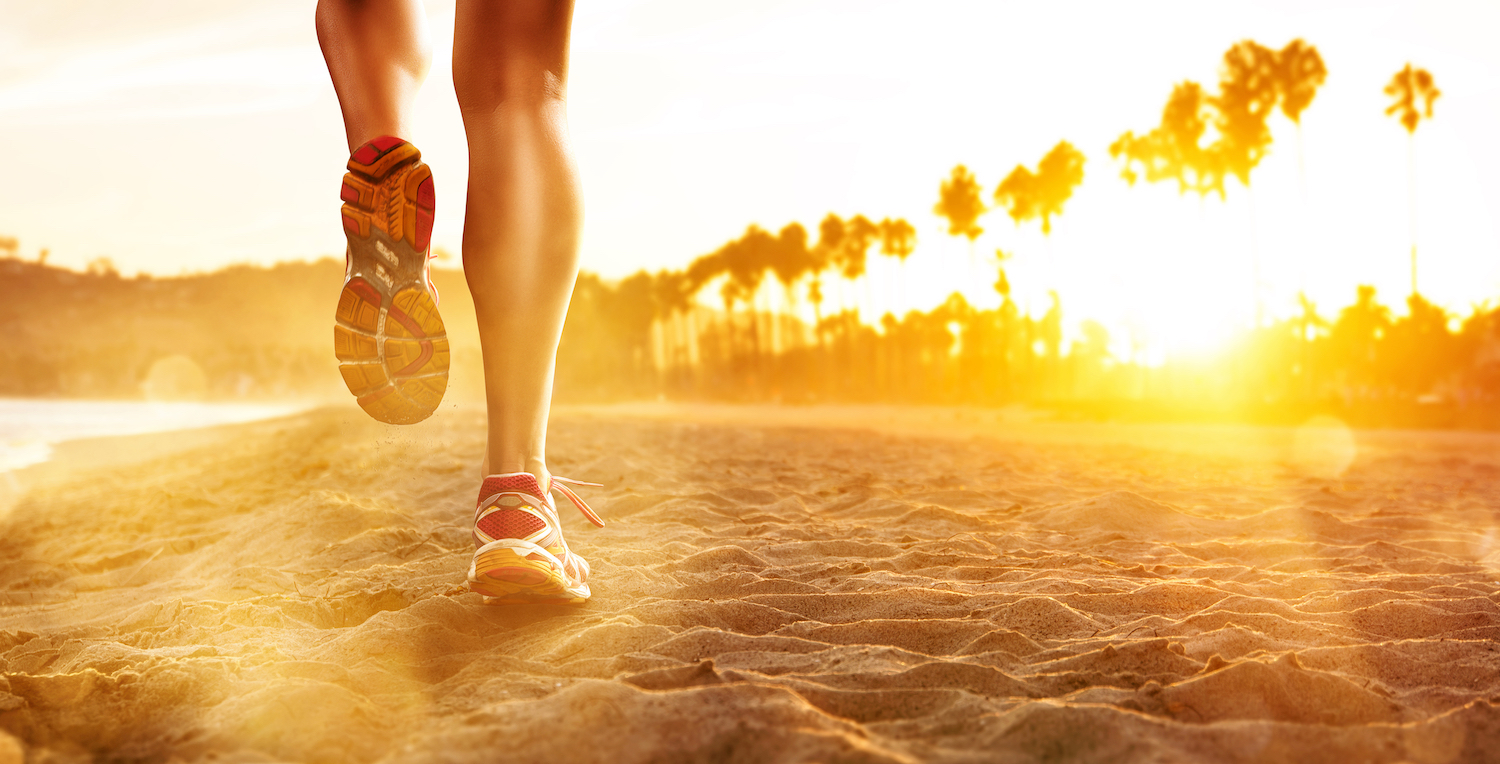Is Running on the Beach Good for Your Body?

The beach may seem like an inviting place to run on a cool summer morning, but is running on the sand good for your body?
It can be, but it's important to know the challenges and potential injuries that some beach runners experience, said Dr. Kelton Vasileff, an orthopedic surgeon at The Ohio State University Wexner Medical Center.
"Running on the beach can certainly be a good thing," Vasileff told Live Science. "It's definitely different than running on the pavement, a track or trails with soft surfaces." [In Photos: The Best US Beaches of 2017]
For starters, sand can be a challenge because it has an uneven surface and constantly shifts under your feet. "As you push off, you're going to lose some of your push as the sand moves," Vasileff said. "So, you're not going to be able to propel yourself forward as you would on a track or pavement."
But this unevenness has an upside: It gives your body an extra workout, forcing you to engage muscles that don't get as much use during runs on firm surfaces. For instance, your feet, ankles, core abdominal muscles, lower back and the muscles around your hips might feel sorer and more tired than usual after a beach run "just because that surface is constantly moving and changing step to step," Vasileff said.
You also might feel sore afterward because beaches tend to slope downward, toward the water. If you're going for a long run on the beach, you might notice that one side of your body — including your ankle, leg or knee — might feel sore because you're putting more pressure on it due to the slope, Vasileff said.
Some beach runners opt to run barefoot. However, if you're not used to barefoot running, Vasileff advised you start slowly and don't run long distancesat first. That's because running barefoot uses different muscles than running with shoes does, and it's important to strengthen these muscles and adapt your feet.
Get the world’s most fascinating discoveries delivered straight to your inbox.
Moreover, because sand can be abrasive, "you can get blisters pretty easily from running barefoot," Vasileff said. "If you want to run barefoot, great, but ease into it."
Despite these challenges, running on sand can be a smart choice for athletes. Because sand has "high shock absorptive qualities," running on it can decrease the impact on your body during high-intensity workouts, according to a 2013 review on sand training published in the Journal of Sports Sciences. This could potentially lead to "reduced muscle damage and [less] soreness," the researchers wrote in the review.
In another study, published in 2017 in the European Journal of Sport Science, researchers found that women had less myoglobin — a protein that can be a sign of muscle inflammation — in their blood after running on the sand than they did after running on grass. This finding suggests that running on softer ground surfaces, such as sand, may reduce muscle damage, the researchers said.
Original article on Live Science.

Laura is the managing editor at Live Science. She also runs the archaeology section and the Life's Little Mysteries series. Her work has appeared in The New York Times, Scholastic, Popular Science and Spectrum, a site on autism research. She has won multiple awards from the Society of Professional Journalists and the Washington Newspaper Publishers Association for her reporting at a weekly newspaper near Seattle. Laura holds a bachelor's degree in English literature and psychology from Washington University in St. Louis and a master's degree in science writing from NYU.


